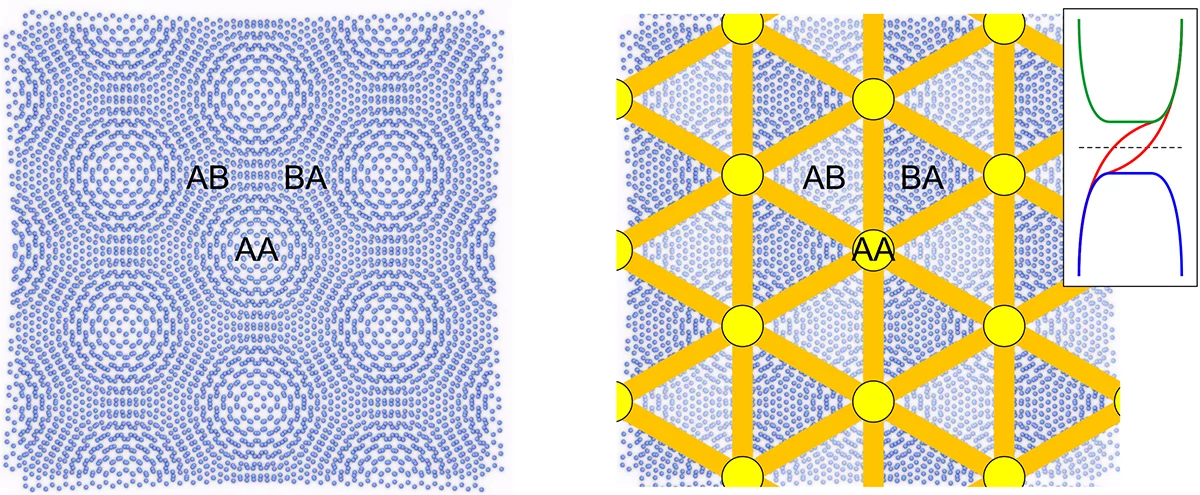In the latest "News and Views" section of the August issue of Nature Nanotechnology, Tatiana Latychevskaia provides comments and perspectives on a study of the evolution of topological states in bilayer graphene upon lithium intercalation by Endo et al. [1,2].
Topological states are exciting physical objects with potential for use in quantum applications. In bilayer graphene, the topological states are hosted by the domain walls (DWs) that separate the AB and BA stacking of atoms. An example of topological channels in twisted bilayer graphene is shown in Figure 1. Now, Endo et al. have demonstrated that the distribution and geometrical parameters of the topological channels network formed in bilayer graphene on SiC support can be varied by using lithium atoms intercalation [2]. To show the spatial distribution of the network and its time evolution during lithium atoms intercalation, Endo et al. employed dark field electron microscopy, where the image contrast is highly sensitive to the local three-dimensional arrangement of the atoms in the probed region. Endo et al. showed that the DWs can be controllably moved and the size of the domains can be varied by varying the amount of intercalating lithium atoms. Remarkably, despite these significant re-arrangements of the sample, the number of the AA and AB regions and the DWs remained unchanged during the entire process, thus demonstrating the stacking structure topology.
The study by Endo et al. demonstrates how electron microscopy can be utilised to observe the atomic re-arrangements that ultimately define the unique electron properties of the material. In her comment [1], Latychevskaia further provides perspective for further research: The electronic properties of such systems are yet to be characterised. Moreover, other 2D crystals and various intercalating atoms can be tried out. The observed differences in the speed of lithium intercalation and de-intercalation processes can be further investigated for optimisation of lithium batteries performance.
References
1. Latychevskaia, T., Controlling topological states in bilayer graphene. Nature Nanotechnology 2023. DOI: 10.1038/s41565-023-01454-8
2. Endo, Y.; Yan, X.; Li, M.; Akiyama, R.; Brand, C.; Liu, Z. J.; Hobara, R.; Hasegawa, S.; Wan, W.; Novoselov, K. S.; Tang, W.-X., Dynamic topological domain walls driven by lithium intercalation in graphene. Nature Nanotechnology 2023. DOI: 10.1038/s41565-023-01463-7
Contact
PD Dr. Tatiana Latychevskaia
Laboratory of Nanoscale Biology
Paul Scherrer Institut
Forschungsstrasse 111, 5232 Villigen PSI, Switzerland
Telephone: +41 56 310 4679
E-mail: jinghui.luo@psi.ch


